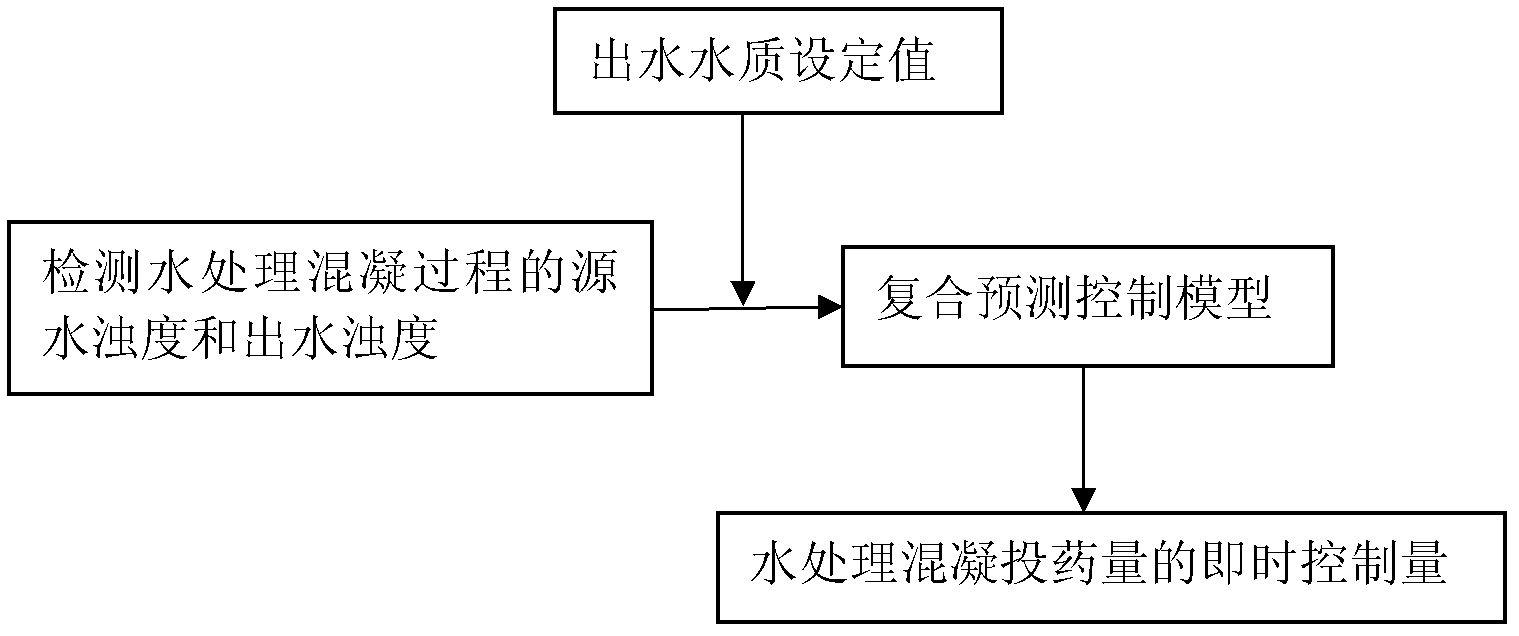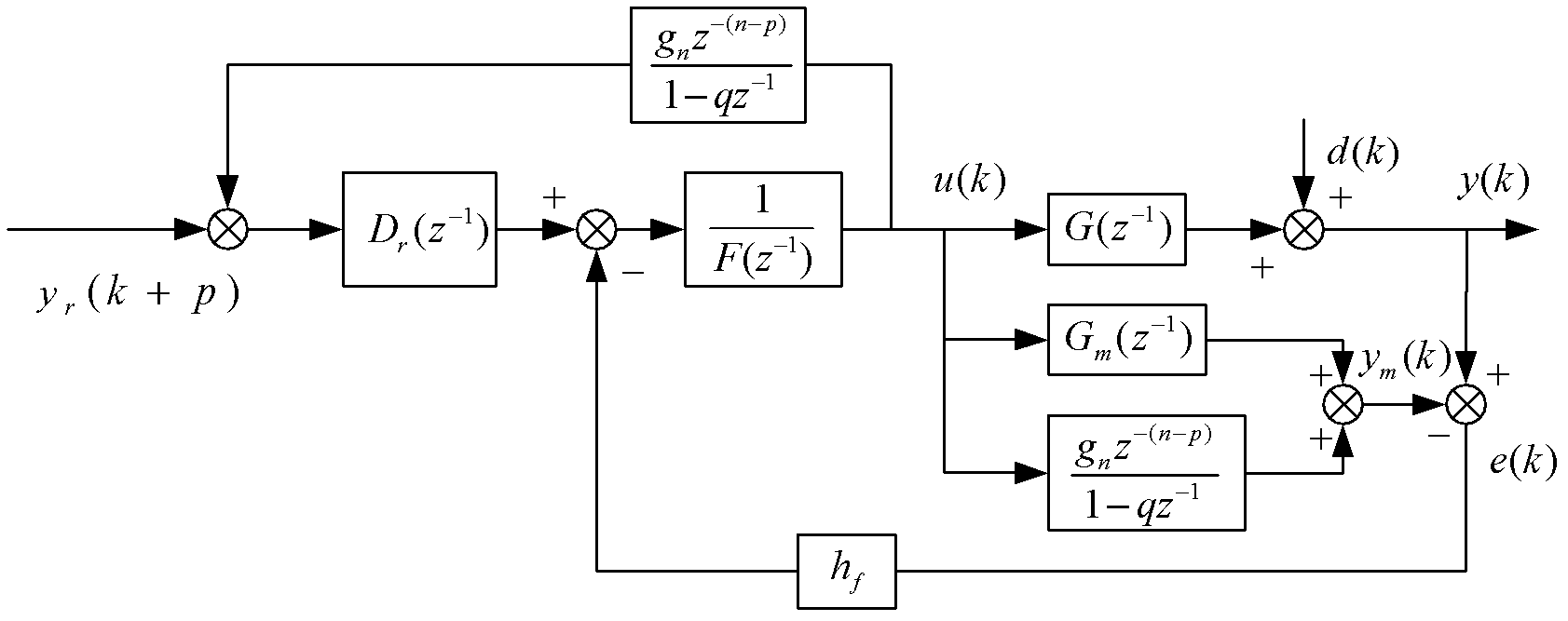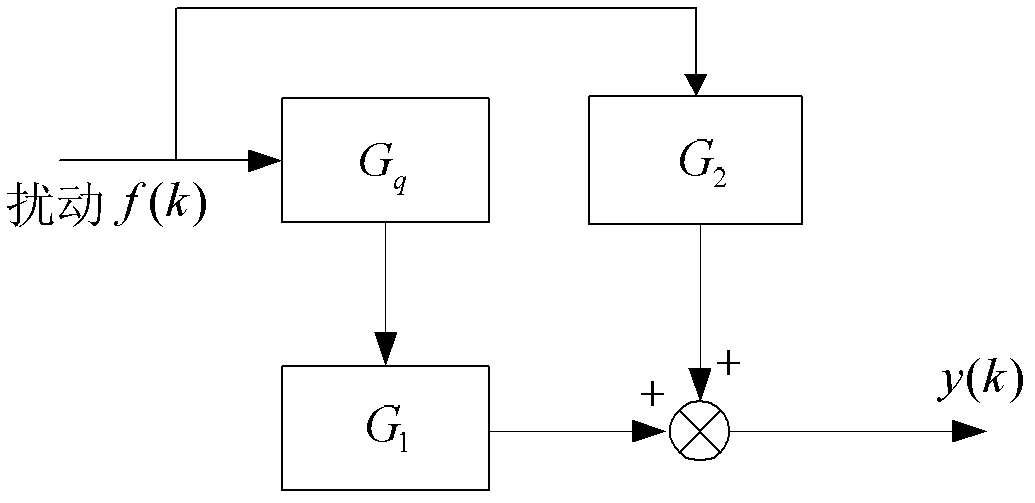Method for carrying out composite predictive control on coagulant dosage of water treatment
A predictive control and water treatment technology, applied in the fields of flocculation/sedimentation water/sewage treatment, adaptive control, general control system, etc., can solve the problems of uncertain objects, nonlinear coagulation process, complex control, etc., and achieve algorithm simplification , to facilitate the realization of the project, to improve the effect of real-time performance
- Summary
- Abstract
- Description
- Claims
- Application Information
AI Technical Summary
Problems solved by technology
Method used
Image
Examples
specific Embodiment approach 1
[0061] like figure 1 As shown, using the composite predictive control model, by detecting the source water turbidity and effluent turbidity in the water treatment coagulation process, combined with the set value of the effluent water quality, input the composite predictive control model to obtain the real-time control amount of the water treatment coagulation dosage , the establishment of the compound predictive control model includes the following steps:
[0062] 1. Modeling of the coagulation process Using the principle of combining typical signal response and least squares, the internal disturbance model and external disturbance model of the coagulation process are established. The internal disturbance model uses the dosage as the input, and the turbidity of the coagulated water produced by water treatment The degree is the output, the external disturbance model uses the source water turbidity as the input, and the water treatment coagulation effluent turbidity as the outpu...
specific Embodiment approach 2
[0096]Specific Embodiment 2: This embodiment is an improvement on the basis of Embodiment 1. In practice, since the source water quality sampling usually has a certain time interval, leading items that cannot be physically realized appear, so it is necessary to carry out sampling of the source water The source water quality mainly considers the change of turbidity, and the turbidity forecast is to use the past and actual information of source water turbidity parameters to predict the future. Considering the project implementation using the AR model-based time series forecasting method:
[0097] x n = φ 1 x n-1 +...+φ p x n-p +ε n
[0098] where x n is the turbidity sequence, φ is the AR model coefficient, p is the model order, ε n for noise.
[0099] p order φ 1 ,...φ p A parameter can be identified by recursive least squares, so the application of the AR model can predict The sequence of k=1, 2, . . .
[0100] Step 4 in the implementation mode 1 is in concrete r...
specific Embodiment approach 3
[0104] Taking the application of compound predictive control on the simulated coagulation dosing device of a water plant as an example, the realization method is given.
[0105] 1. Measuring step response curve modeling
[0106] The change of water turbidity measured by the step change of dosage is shown in Table 1:
[0107] Table 1 Measured values of drug dose flying experiment
[0108]
[0109] The change of water turbidity measured by source water turbidity step change is shown in Table 2:
[0110] Table 2 The measured values of the turbidity soaring experiment
[0111]
[0112] According to the typical responses in Table 1 and Table 2 and the aforementioned modeling method, the internal disturbance model is obtained: G 1 ( s ) = - 1.04 ( 11.44 s ...
PUM
 Login to View More
Login to View More Abstract
Description
Claims
Application Information
 Login to View More
Login to View More - R&D
- Intellectual Property
- Life Sciences
- Materials
- Tech Scout
- Unparalleled Data Quality
- Higher Quality Content
- 60% Fewer Hallucinations
Browse by: Latest US Patents, China's latest patents, Technical Efficacy Thesaurus, Application Domain, Technology Topic, Popular Technical Reports.
© 2025 PatSnap. All rights reserved.Legal|Privacy policy|Modern Slavery Act Transparency Statement|Sitemap|About US| Contact US: help@patsnap.com



